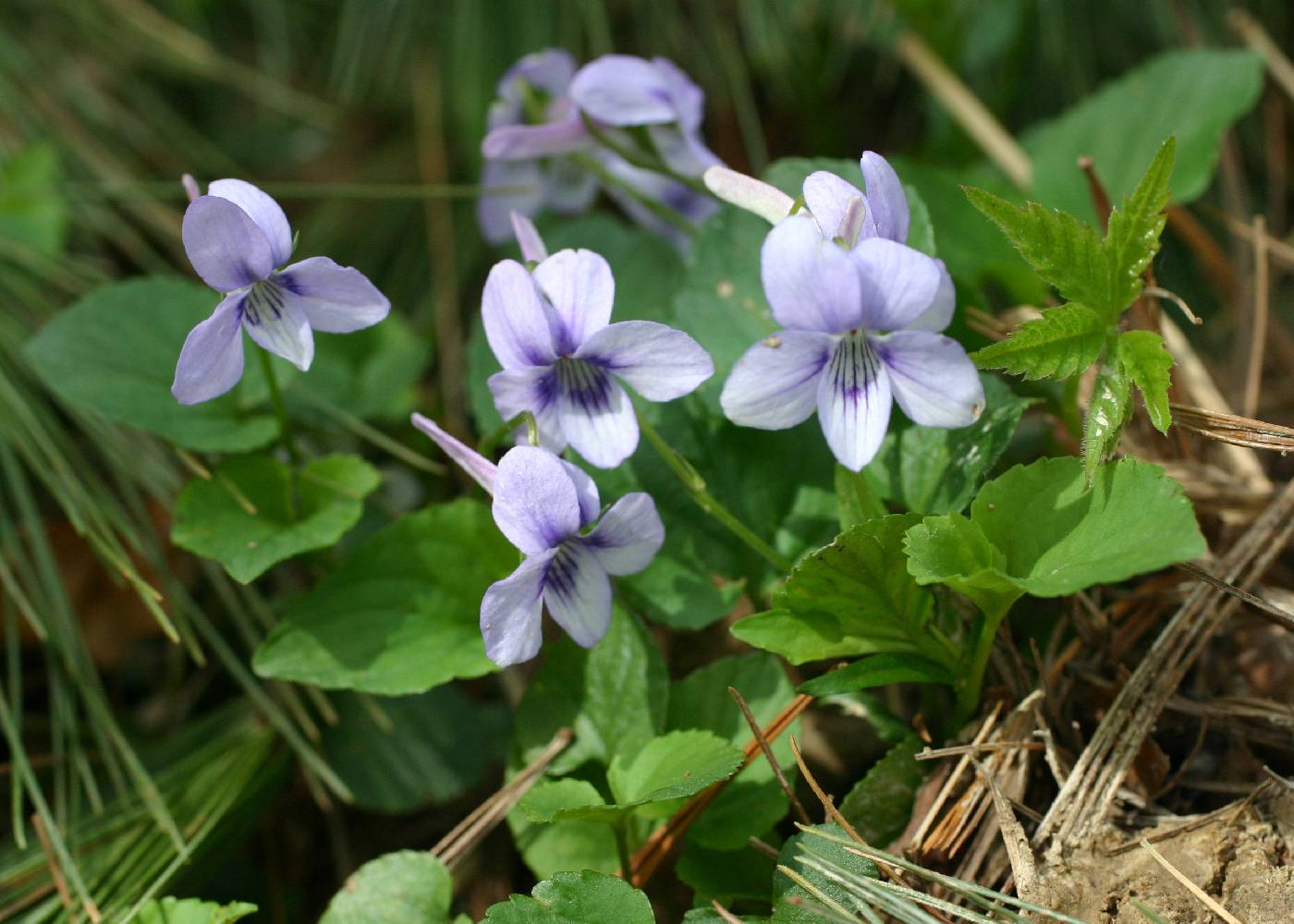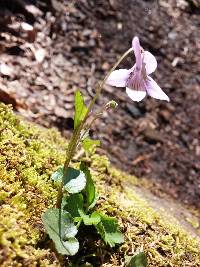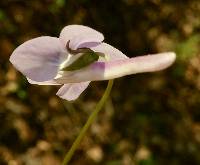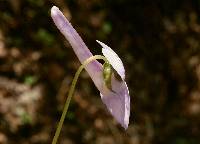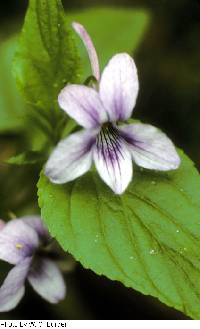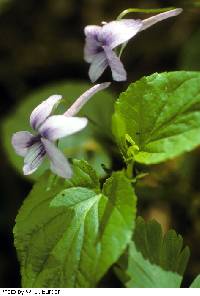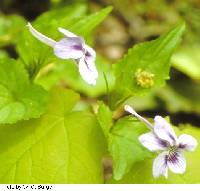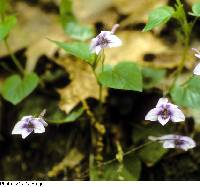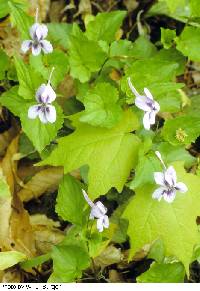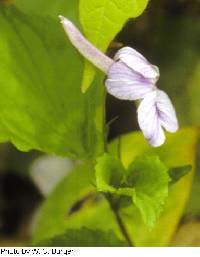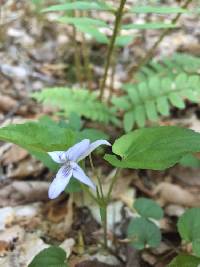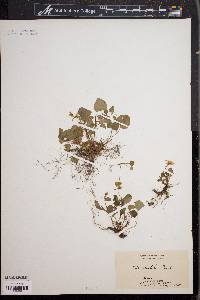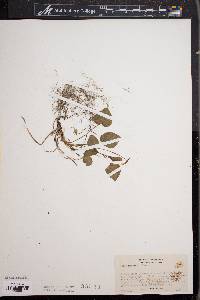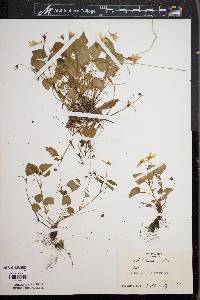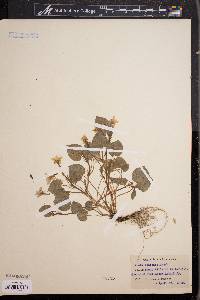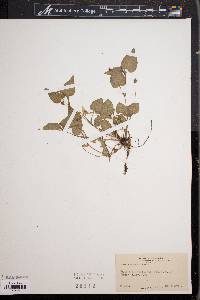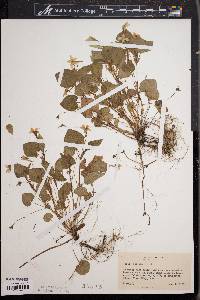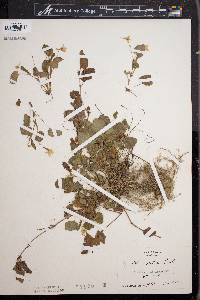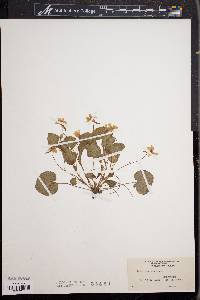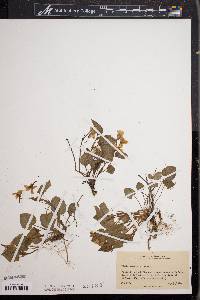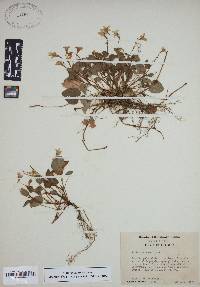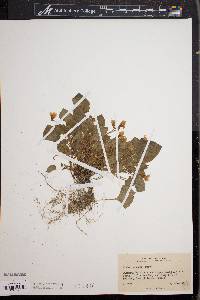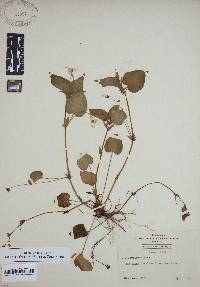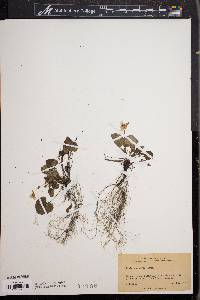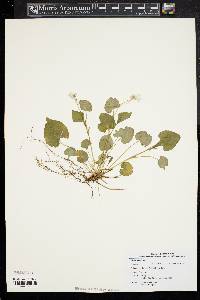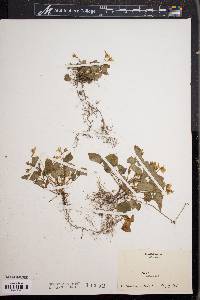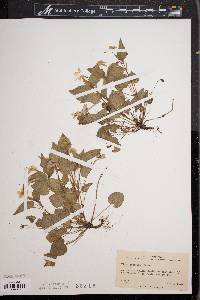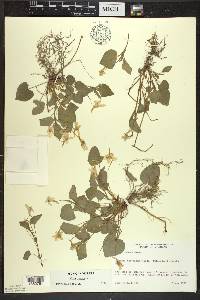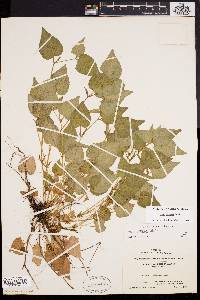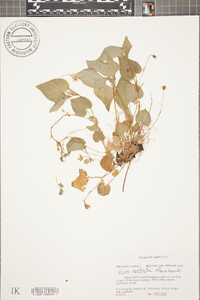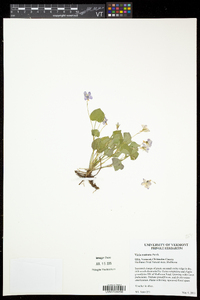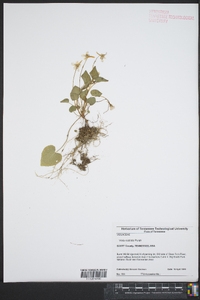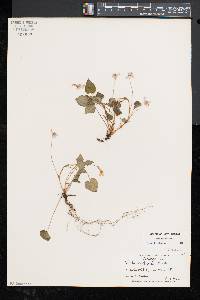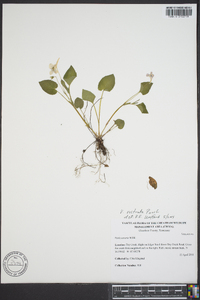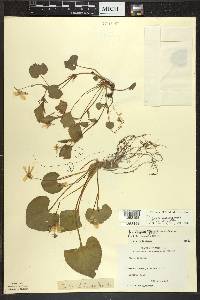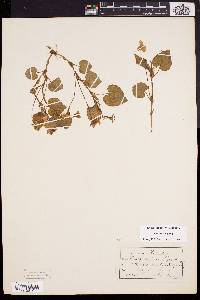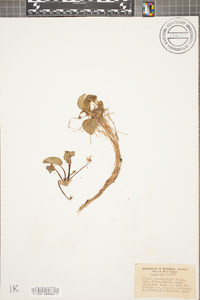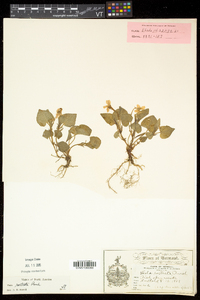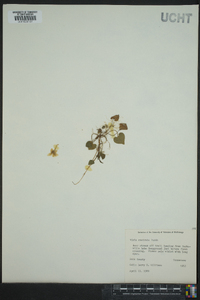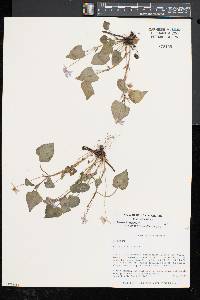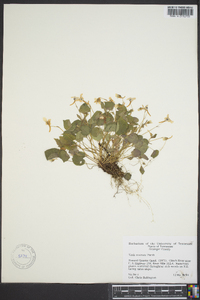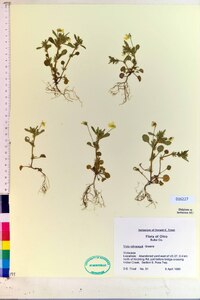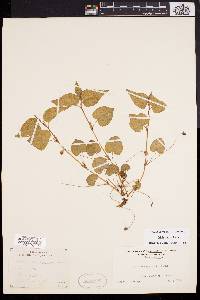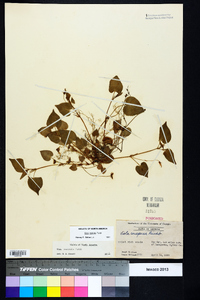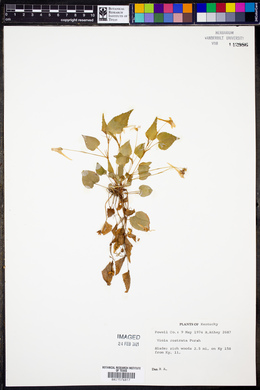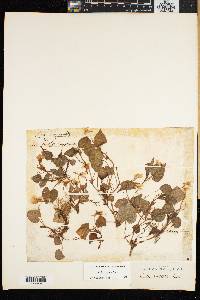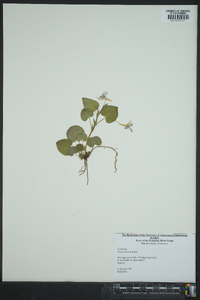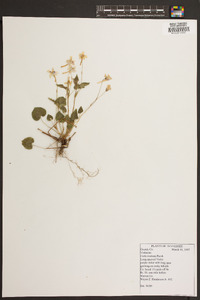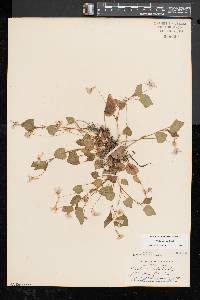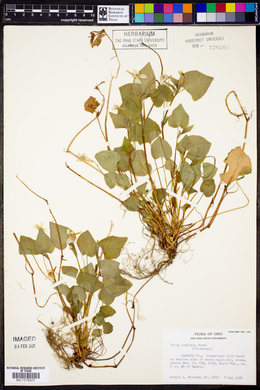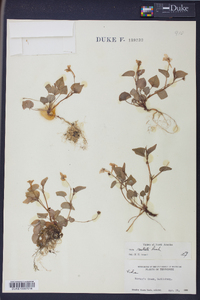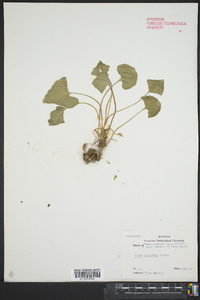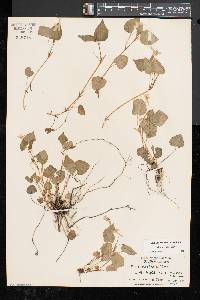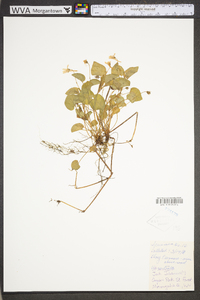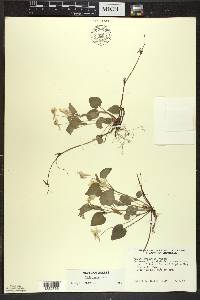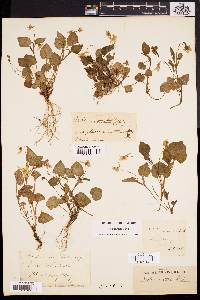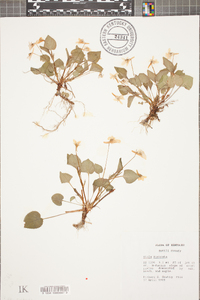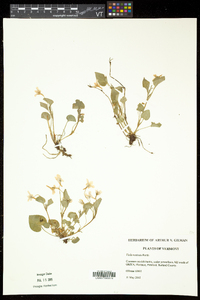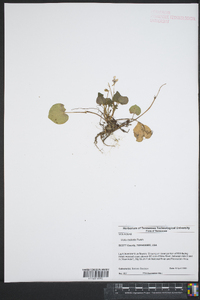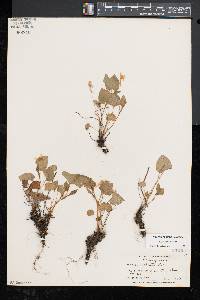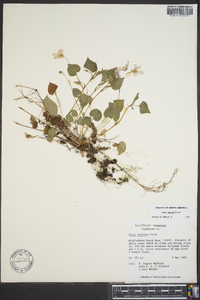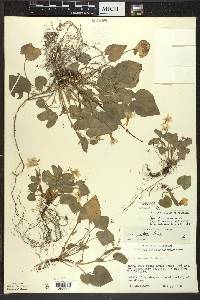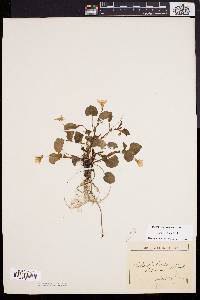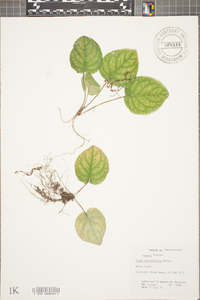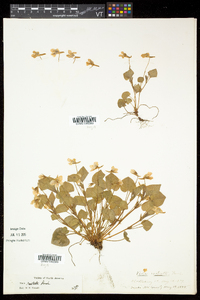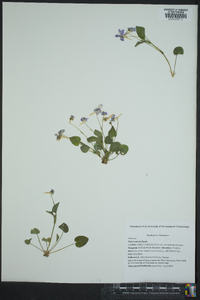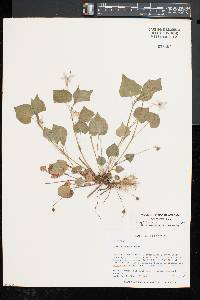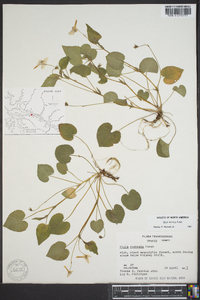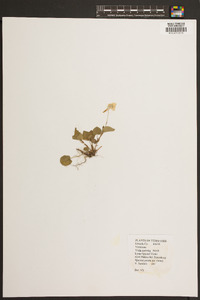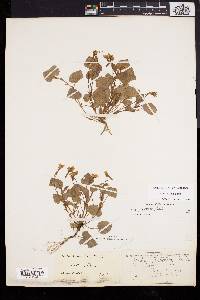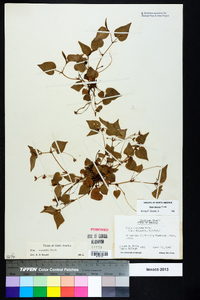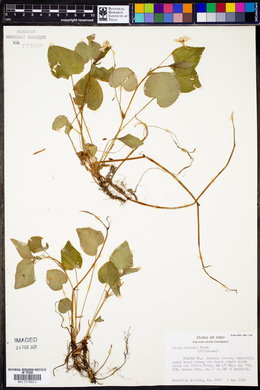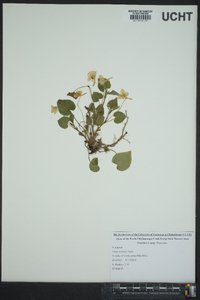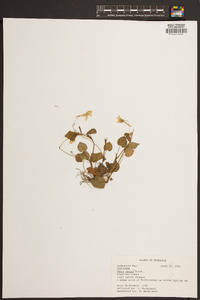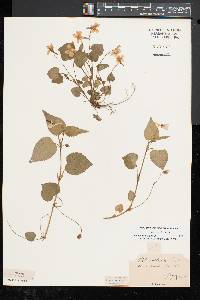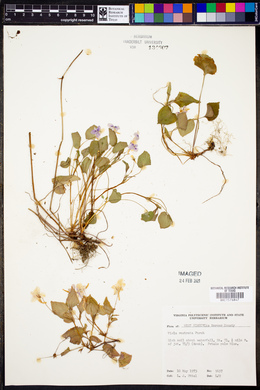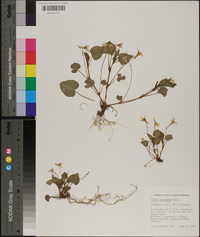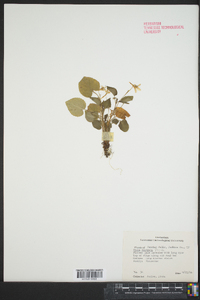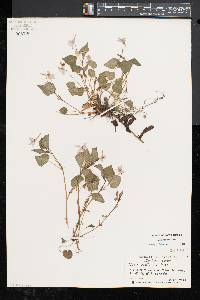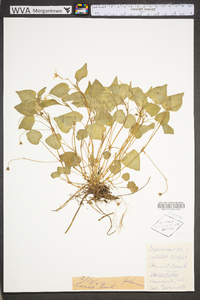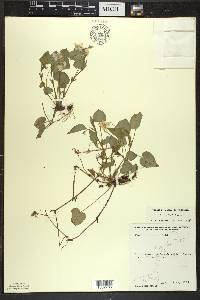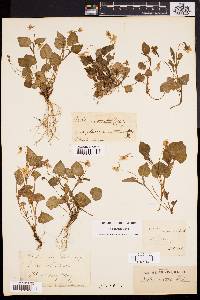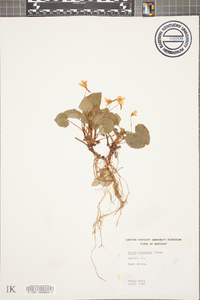Viola rostrata
|
|
|
|
Family: Violaceae
Long-Spur Violet, more...long-spurred violet
|
Perennial herb 5 - 25 cm tall Stem: erect or spreading, mostly hairless, producing both leaves and flowers, and arising from a short but branched rhizome. Leaves: both basal and alternate, stalked, sharp short-toothed, 2 - 4 cm long, egg-shaped to oblong with heart-shaped base and usually gradually pointed tip. The stipules are green, 1.5 - 2 cm long, narrowly lance-shaped to linear or oblong, and fringed along the upper edges with thread-like segments up to 3 mm long. Flowers: in upper leaf axils, long-stalked (extending beyond leaves), light blue to lavender with dark purple center, about 1.5 - 2.5 cm long, bilaterally symmetric with two upper petals, two lateral petals, and lower petal with base modified into a long nectar spur. In the summer, producing very fertile flowers that do not open (cleistogamous). Sepals: five, green, lance-shaped with ear-like appendages (auricles) at the base. Petals: five, separate, all differently shaped, light purple with darker veins especially near base. The two lateral petals are beardless, and the lowest petal is prolonged at its base into a 7 - 15 mm long slender spur. Stamens: five, separate, but very tightly arranged so anthers touch as they surround ovary. The filaments are very short, and the lower two stamens have spur-like nectaries on their backs that extend into the spur of the lower petal. Pistil: with a single-chambered, superior ovary; and a single slender, hairless style that curves slightly upwards near the cylindric stigma. Fruit: a many-seeded, 5 - 6 mm long, stout, ellipsoid capsule that opens lengthwise from top. The seeds are light yellow-brown and have a large amount of oily endosperm, and often an appendage (aril). Similar species: Viola rostrata is most similar to V. labradorica, but that species has flowers that are uniformly pale or light blue with bearded lateral petals, the leaves are more broad with a rounded or very abruptly pointed tip, and the leaf edges have low, rounded teeth. Also, V. labradorica normally flowers earlier and may set fruit while V. rostrata is only starting to flower. Another similar species is V. adunca, but it is incredibly rare in the Chicago Region and can be distinguished since its leaves are densely covered with short hairs, if the leaves are toothed they only have rounded teeth, the flowers are entirely dark purple (or dark blue), and the lateral petals are bearded. The hybrid of V. rostrata and V. striata is V. x brauniae, which can be distinguished by its irregularly round-toothed leaves, wider stipules with some bristles on the edges, and flowers with bearded lateral petals and a thick, rounded, shorter (3 - 5 mm) nectar spur. Flowering: April to May Habitat and ecology: Not common, locally most frequent in mesic woods in the most northeastern Chicago Region counties. Occurence in the Chicago region: native Notes: This species commonly hybridizes with V. adunca, V. labradorica, and V. striata. Etymology: Viola is the classical name for the genus. Rostrata means "without a beak". Author: The Field Museum Essentially glabrous, the stems erect or spreading from a branched, oblique, short rhizome, 5-12 cm at anthesis, later 15-25 cm, lvs ovate, often broadly so, 2-4 cm, cordate at base, all but the lowermost acute; stipules lanceolate, fimbriate-toothed above the middle; fls elevated above the lvs; pet light violet, with darker veins forming a pronounced eye, all beardless; spur 7-12 mm, slender, slightly upcurved at the tip; style slender, the tip straight, smooth; fr stoutly ellipsoid, 5-6 mm; seeds light yellow-brown; 2n=20. Shady slopes and woodlands, usually in deep humus; Me. and Que. to Mich. and e. Wis., s. to Ga. and Ala. Apr.-June. Hybridizes with nos. 22 [Viola striata Aiton] and 24 [Viola conspersa Rchb.]. Gleason, Henry A. & Cronquist, Arthur J. 1991. Manual of vascular plants of northeastern United States and adjacent Canada. lxxv + 910 pp. ©The New York Botanical Garden. All rights reserved. Used by permission. From Flora of Indiana (1940) by Charles C. Deam Usually in moist rich soil at the bases of slopes in thick woodland. Rather frequent in the northeastern part of the state, becoming rare or absent in many of the southern counties. …… Indiana Coefficient of Conservatism: C = 8 Wetland Indicator Status: FACU |
|
|
|

